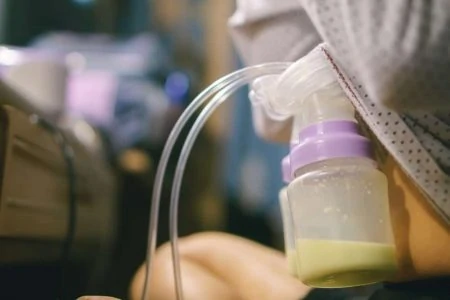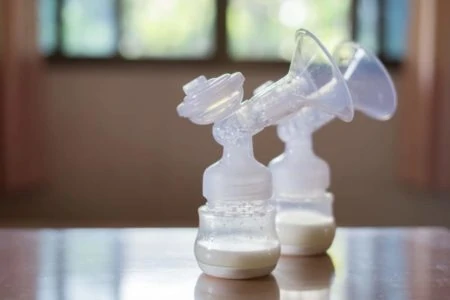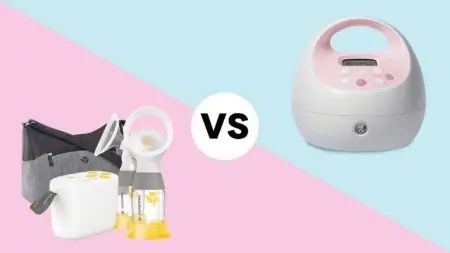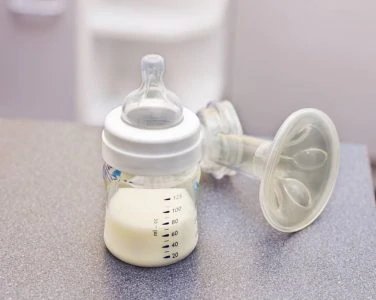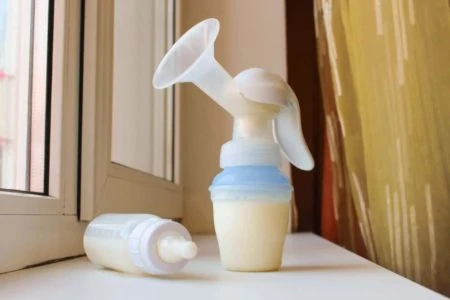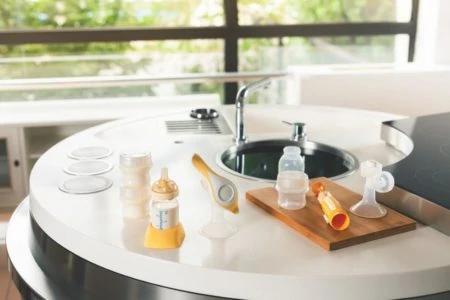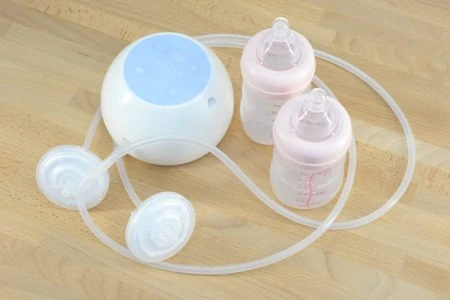So, how do you handle your business without flashing the general public?
It is totally possible to pump in public without feeling exposed. We have gathered years of experience and tips from veteran moms to bring you this guide on pumping on the go. Here is how to keep your supply up and your anxiety down.
Key Takeaways
- Know the definition: “Pumping in public” just means expressing milk outside your guaranteed private zone, like your home or a dedicated lactation room.
- Timing matters: It is okay to delay a session by 30 minutes if you are stuck, but consistent skipping can hurt your supply and cause physical pain.
- Check the law: While breastfeeding is protected in all 50 states, specific laws protecting pumping in public spaces can be vague.
- Gear up: A manual pump, a good nursing cover, and a battery pack are your best friends for discreet sessions.
What Counts as “Pumping in Public?”
Broadly speaking, this refers to any time you express breast milk outside your normal, private sanctuary.
There are varying degrees of privacy here. You might be in a “semi-private” spot, which is an enclosed space that others might still access.
Examples of semi-private spaces include:
- Designated lactation rooms in malls or airports.
- A bathroom stall (not ideal, but sometimes necessary).
- Your parked car.
- A spare room at a friend’s house.
Then there are the truly public places. You are out in the open, and people are around. They might realize what you are doing, or they might just think you are adjusting your shirt.
Examples of public places include:
- Seats on an airplane or train.
- Park benches.
- Concert venues or stadiums.
- Common areas in restrooms (outside the stall).
If you feel self-conscious, start small. Try pumping in your car or a lactation pod first. Once you realize most people aren’t paying attention to you, it gets easier to pump in busier spots.
Can I Just Skip a Session?
If you are running late getting home or stuck in traffic, delaying your pumping session by 30 to 60 minutes is usually fine.
However, if you are constantly on the go, erratic timing can tank your milk production (source).
Take Note
Your body works on supply and demand. If demand drops for 3 or 4 days, your supply drops too. Once your milk flow regulates (usually around month three), it is much harder to increase your supply again. Plus, skipping sessions leads to engorgement and clogged ducts, which are painful.
Is It Legal to Pump Out in the Open?
Here is where it gets tricky. All 50 states have laws granting women the right to breastfeed in public. However, many of these laws do not explicitly use the word “pumping” (1).
The PUMP Act provides federal protection for pumping at work, but public spaces fall under state jurisdiction. It is smart to check your state’s legislation to see if their legal code specifically mentions expressing milk.
If the law is vague, your main concern is “public indecency” statutes. As long as your nipples are covered (using a nursing cover or blanket), you are generally safe.
Honestly, most people won’t confront a pumping mom. But keeping covered helps you avoid unwanted attention if you are in a state without specific protections.
Must-Have Gear for On-the-Go Pumping
You don’t need a suitcase full of gear, but a few specific items make the process smoother.
Consider packing these in your “go-bag”:
- A dedicated breast pump bag with insulated pockets.
- Nursing bras or pumping bras (essential for hands-free action).
- A nursing cover or a poncho.
- Breast pump wipes for quick cleaning when a sink isn’t nearby.
How to Pump in Public Without the Stress
1. Scout the Location
Many public venues now have lactation pods (like Mamava) or nursing rooms. Never be afraid to ask guest services or a front desk manager if there is a private space available for nursing mothers.
You can also use apps or do a quick internet search to find nursing rooms nearby.
If a room exists, great. If not, don’t panic. You can still do this discreetly in the open.
2. Wear Your Pumping Bra
Wrestling with a bra in a public seat is not fun. Put your pumping bra on before you leave the house.
If you don’t own a hands-free pumping bra, you can hack one. Take an old sports bra, cut small slits over the nipples, and wear it. Keep breast pads inside to prevent leaks and cover the holes until you are ready to pump.
When it is go-time, just slide the pads out and the flanges in. No undressing required.
3. Pick the Right Pump
If you know you’ll be out and about frequently, your choice of pump matters.
- Manual Pumps: A manual breast pump is silent, cheap, and requires no electricity. It is perfect for occasional outings where you don’t want to draw attention with a rhythmic “whoosh-whoosh” sound.
- Battery-Operated Pumps: If you pump often, hand cramping is a real risk with manual pumps. Use an electric pump with a rechargeable battery pack so you aren’t hunting for wall outlets.
- Wearable Pumps: Devices like the Willow or Elvie slip right into your bra. There are no tubes or dangling bottles. These are the ultimate tool for pumping in public unnoticed.
- Car Adapters: If the car is your sanctuary, ensure you have a car adapter or a power inverter.
4. Pre-Assemble Your Kit
Fumbling with valves and membranes on a park bench is a recipe for losing parts. Assemble your flanges, bottles, and valves before you leave the house.
Keep the assembled kit in a gallon-sized zip-top bag to keep it sanitary.
Take Note
Just remember to pack the bottle caps so you can seal the milk when you are done.
5. Dress Strategically
Your outfit can make or break your session. A nursing top is designed for access, but you don’t strictly need one.
The “two-shirt method” works wonders: wear a camisole underneath a loose, flowy top. Pull the top shirt up and the camisole down to access the breast. This keeps your stomach covered and provides a natural shield for the pump parts.
Avoid tight dresses or shirts that don’t stretch.
Definitely don’t choose a one-piece dress (which I once made the mistake of doing for a family wedding)!
Editor's Note:
Michelle Roth, BA, IBCLC6. Cover Up (If You Want To)
If privacy makes you more comfortable, bring a cover. It hides the collection bottles and allows you to massage your breasts while pumping without anyone seeing.
- Nursing Ponchos: These provide 360-degree coverage so your back isn’t exposed.
- Infinity Scarves: These unwrap to become wide covers in a pinch.
- Blankets: A simple muslin swaddle tied loosely around your neck works perfectly.
7. Store Your Liquid Gold
Once you finish, you need to protect that milk. Pump directly into breast milk storage bags if possible to save space. If you pump into bottles, screw the caps on tight.
Do not try pouring milk from bottles to bags while walking or sitting in a crowded area; spills happen too easily. Keep your pumped milk in a small cooler bag with ice packs.
8. Clean on the Fly
If this is a one-time pump for the day, just toss the dirty parts in a “wet bag” and wash them at home.
If you need to pump again while out, use breast pump wipes. They are formulated to remove milk residue safely. Wipe out the flanges and valves, let them air dry for a moment, and you are ready for round two.
FAQs
The Bottom Line
Pumping in public might feel daunting at first, but with the right tools, it becomes second nature. A little preparation goes a long way. Pack your bag, check your battery levels, and dress in layers.
Remember, you are doing this to feed your baby. Be confident. If things go wrong (and leaks happen to the best of us), just laugh it off. You’ve got this.
